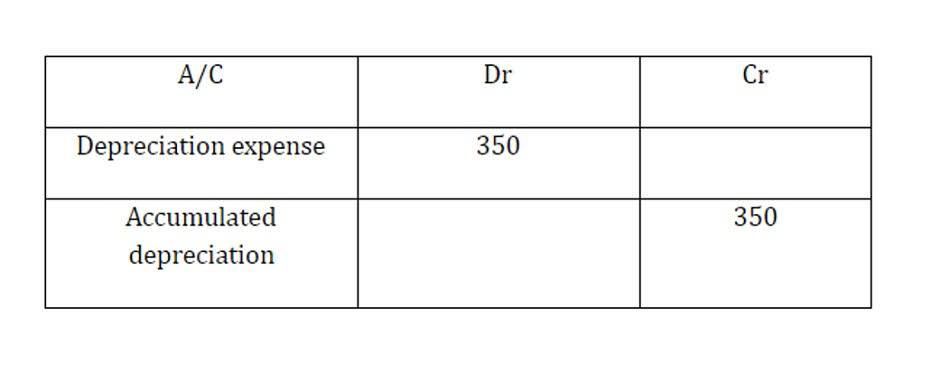
The entries need to be classified systematically and accurately or it may not serve the purpose of the Ledger. When each entry is posted its ledger account the journal entry number is usually placed next to the entry in the T-account. This leaves and audit trail to follow back all of the entries in the ledgers back to the original entries in the journal. Accruing tax liabilities in accounting involves recognizing and recording taxes that a company owes but has not yet paid. This is important for accurate financial reporting and compliance with… Similarly, if an account in a journal entry has been credited it will be posted to the ledger account by entering the same amount on the credit side/column of the respective ledger account.

Posting From Journal to Ledger
- Once the transaction is recorded, it must be transferred to the ledger accounts.
- Mastering posting is key to keeping your business finances in order and producing reliable financial statements.
- However, posted entries in the general journal are not verified to be correct until the assets, liabilities and equity calculated in the accounting journal balance.
- With the right tech stack, you can revolutionise your accounting practice, add value to your clients, and create a new income stream by monetising your data insights.
- In the monthly closing, adjustments and entries are posted to the ledger.
As business transactions occur during the year, they are recorded by the bookkeeper with journal entries. After an entry is made, the debit and credit are added to a T-account in the categorized journal. At the end of a period, the T-account balances are transferred to the ledger where the data can be used to create accounting reports. From the perspective of closing the books, posting is one of the key procedural steps required before financial statements can be created. In this process, all adjusting entries to the various subledgers and general journal must be made, after which their contents are posted to the general ledger. It is customary at this point to set a lock-out flag in the accounting software, so that no additional changes to the subledgers and journals can be made for the accounting period being closed.
- Posting is also used when a parent company maintains separate sets of books for each of its subsidiary companies.
- In the General Journal, when an account has been posted to an individual account, the number assigned to that account is listed in the Post Ref column to indicate that entry has been posted.
- This important split of financial tasks strengthens internal controls.
- Below is an example of what the T-Accounts would look like for a company.
- The final step is to cross verify the balances and recheck whether there are any mathematical errors; if any of the errors are found, rectify them to maintain proper records.
What is Journal? Process, Example

Each accounting record entry can change the financial balance. Proving that recorded financial entries are correctly written in the accounting journal simply requires another look at all of the receipts received during the year. However, posted entries in the general journal are not verified to be correct until contra asset account the assets, liabilities and equity calculated in the accounting journal balance. An accounting posting is the transfer of entries in the subsidiary books of account or journals to the appropriate general ledger accounts and is part of the double entry bookkeeping system.

Company

But where more than two accounts are involved in one single transaction and there is only one journal entry made, it is said to be a compound entry. There can be two accounts in the debit and one in the credit or one in the debit and two in credit part. However, the rule of posting is the same in this case too, but care should be taken while posting the amounts. The first step in the accounting cycle what is posting accounting starts by identifying events and analyzed them to see how they affect the accounting equation. After events are identified, they can be record in the general journal with a journal entry. These entries record the transaction’s effect on the accounting question in the accounting system.
With Journal Entries

For example, Cash, an asset, is assigned an account number beginning with the number one 100, 1000, 10100. Accounts Payable, a liability, is assigned an account number beginning with the number two 200, 2000, 24000. If you would like to see what it looks like to move journal postings into a general ledger in Excel, watch this additional video. If you would like to see what it looks like to move journal postings into a general ledger in Excel, watch this additional video. An accountant’s job is more complicated when financial data is in fragments. It often involves leveraging technology like AI and data analytics to automate routine tasks, assist accountants with strategic planning, advise clients, and facilitate data-driven decision-making.
- An accountant’s job is more complicated when financial data is in fragments.
- An accounting posting is the transfer of entries in the subsidiary books of account or journals to the appropriate general ledger accounts and is part of the double entry bookkeeping system.
- The general ledger is a compilation of the ledgers for each account for a business.
- The three-column form ledger card has the advantage of showing the balance of the account after each item has been posted.
- Yes, software like QuickBooks can automate posting, entering transactions into accounts in real-time.
Without Journal Entries
- For example, fixed asset purchases may be so infrequent that there is no need for a specialty ledger to house these transactions, so they are instead recorded directly in the general ledger.
- The balance is directly transferred to a general ledger for small organizations because of the low volume of accounting transactions.
- The use of bookkeeping software tools helps make this process more accurate and less prone to errors.
- There can be two accounts in the debit and one in the credit or one in the debit and two in credit part.
- When posting the general journal, the date used in the ledger accounts is the date the transaction was recorded in the journal, not the date the journal entry was posted to the ledger accounts.
- Accounting software is usually supplied in modular format allowing a business to select the relevant accounting functions it requires to operate.
- It reduces the likelihood of human error, improves efficiency, and speeds up processes, leading to more accurate financial reporting and time to focus on analysis and strategic planning.
This can require a significant amount of additional research work. Debits increase balance sheet asset accounts, such as cash and inventory, and increase income statement expense accounts, such as marketing and salary expenses. Debits decrease balance sheet liability accounts, such as notes payable, and shareholders’ equity accounts, such as retained earnings. The locations in which recorded and posted numbers are placed by accountants are completely separate. When a financial transaction occurs, it is recorded in the accounting journal under the appropriate section.
